
Written by: Nayha Jehangir Khan
Posted on: February 10, 2023 |  | 中文
| 中文
RM Naeem
For 35 years the National Exhibition of the Artists Association of Punjab (AAP) has displayed artwork by artists from across Pakistan. The group exhibition features over 150 artists showcasing paintings and sculptural pieces on the themes of figuration, abstraction, portraiture, still life and landscape. Ahmed Shah, President of the Arts Council of Pakistan, Karachi was invited to inaugurate the opening of the exhibition on 1 February 2023. Open to the public, the group exhibition was installed in Alhamra Art Gallery lining its multiple halls and floors, where visitors could experience viewing over 300 works of art on display.
The 35th National Art Exhibition brings together artists from Punjab, Sindh, Balochistan, and KPK under the supervision of its Chairman, Mian Ijaz ul Hassan, Deputy Chairman Sindh, Tanveer Farooqi, Deputy Chairman Quetta, Mazhar Hameed and Deputy Chairman KPK, Ali Sajid, Ghulam Mustafa and Amna Ismail Pataudi. Each member of the AAP has dedicated themselves for decades to creating a platform that can collectively represent Pakistani Art, while ensuring that artists from a diverse range of backgrounds are featured each year. The exhibition was curated by the Executive Director of Alhamra, Zulfiqar Ali Zulfi, and the AAP Selection & Display Committee, which included Quddus Mirza and Dr Sumera Jawad. A Seminar was hosted on 9th February as a closing ceremony. It featured a number of panelists from various fields of the arts and members of the AAP, reflecting on the nature of creating art, the role of artists in shaping society and the development of creativity for the next generation. The panel included Shahnawaz Zaidi, a Pakistani actor, poet and a painter who spoke on the power of descriptive poetry and its impact on his personal life. The panel also included Jamal Shah, who is the Founder of the Artists Association of Balochistan, and Quddus Mirza who is a Senior Art Critic, Artist and Art Educator.
The primary goal of the AAP is to encourage younger upcoming artists to showcase their art to a wider audience, and offer opportunities like the National Art Exhibition that reinforce the importance of art and culture in actively reforming society. The program included an honorary remembrance of the late Sardar Asef who was a prominent painter and an active member of the Artists' Association of Punjab during his life. Asef’s paintings continue to carry a sense of serenity. It was mentioned that he opened an art gallery during his tenure as Foreign Minister at the Foreign Office, a testament to his passion for the arts. The late Shahid Jalal was celebrated as well for having played an integral part in defining modern landscape painting in Pakistan.
The visual building blocks of a majority of the works on display, refer to the architectural heritage and agricultural landscape of Pakistan. The artists are able to capture the human connection with nature through various techniques, subject matter and colour composition, revealing a sense of connection in observing their environment and culture. In Ghulam Mustafa’s painting, behind a bright wall of flowers, are gentle tones of blue and violet reflected off the skins of grazing cattle, and travelling further behind them are ghostly impressions of a town structure. The painting captures the flood of aliveness during the harvest springtime of Punjab, represented by the brightly coloured fields of yellow crops. In contrast, the painting by Mian Ijaz ul Hassan has muted tones with a jarring large tree bark in the foreground, dividing the picture plane paired with scattered branches stretching across the canvas instantly creating multiple smaller paintings. The eye of the viewer travels from each space between the branches, creating imaginary details and trying to reconnect the view behind the tree in the mind's eye. The painting by Chitra Pritam allows the viewer to travel to the artist's home city Karachi to witness fishermen on wooden boats, the romantic impressionistic stylisation transforms the colour of the seawater, infusing it with the warm glow of sunlight. Each artist uses the colour yellow through their own unique interpretation, revealing the multiplicity in perspective held within the artistic observation of nature.
RM Naeem and Javed Iqbal Mughal use their visual interpretation of complex human relationships, social behaviour and psyche to depict modernistic figurative compositions. The emotive language here is subtle, with symbolism created through the colour and positioning of their figures. The body language is amplified in Mughal’s diptych showing a group of young men crowded together perhaps in a heated discussion, whereas Naeem chooses to constrict the body, presenting a more psychological inner world of the protagonist's state of mind. The exhibition featured sculptural pieces that took on classical calligraphy and architectural motifs as seen in Jamil Hussain’s installation, showcasing a two-faced wall with embellished tiles. The minimal piece by Minaa Haroon captures the tactile nature of the material by presenting a white-on-white pattern with only a top half coloured in indigo, perhaps referencing the indigenously recognised colours of the region.
The participation of 156 artists from all over Pakistan is a sign that art creation is on the rise in the country. Artists can showcase their work and can find a place for themselves in the Artists Association of Pakistan, with their own provincial body located in their region. Together these various fractions of the AAP have established themselves as the leading platform to represent art in the country.
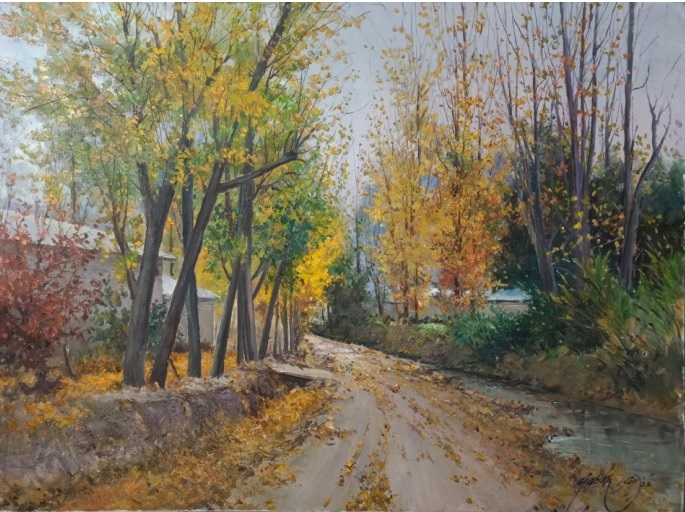
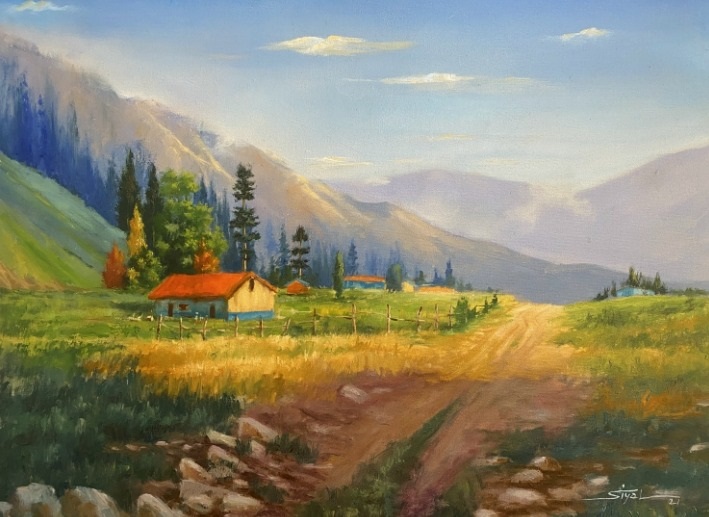
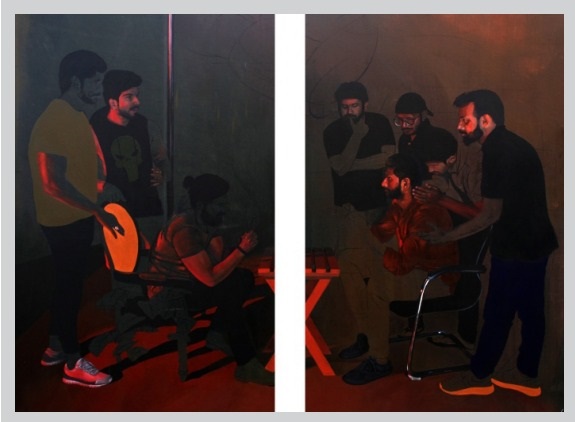
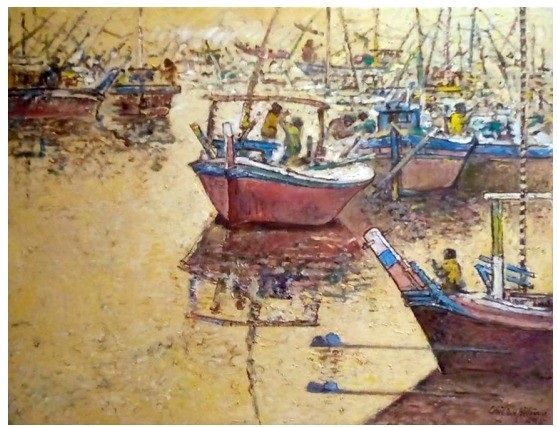
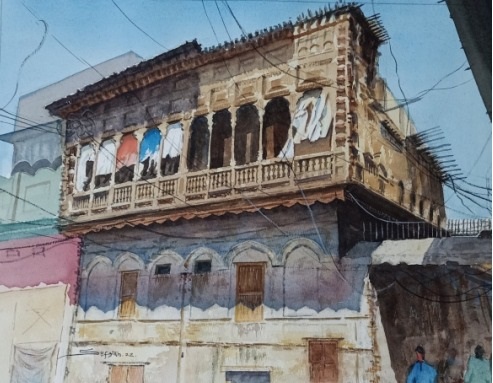
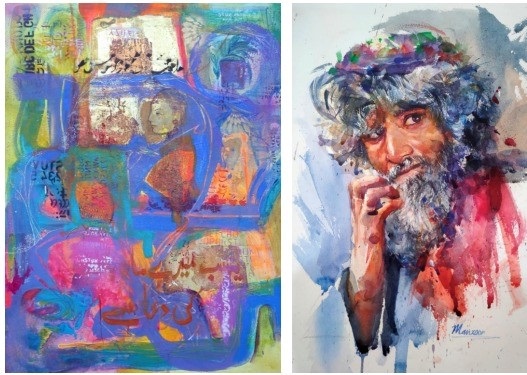
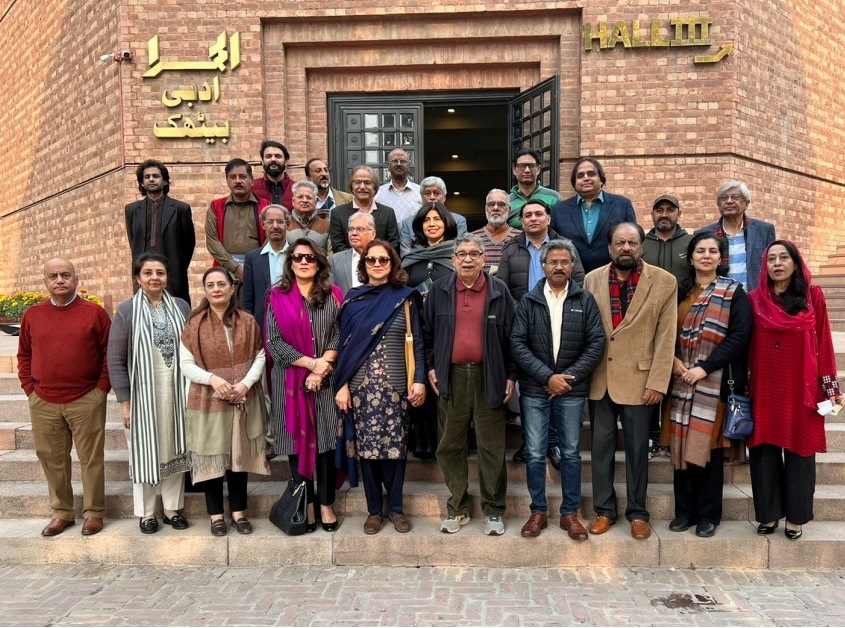
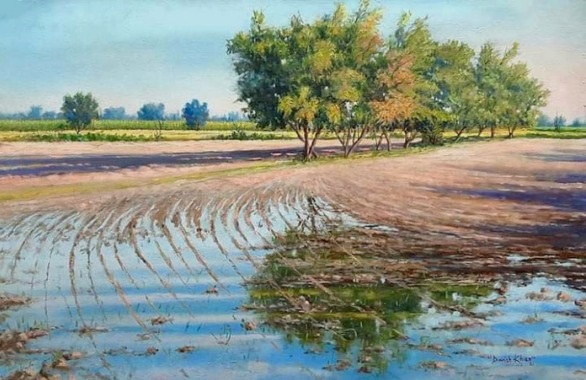
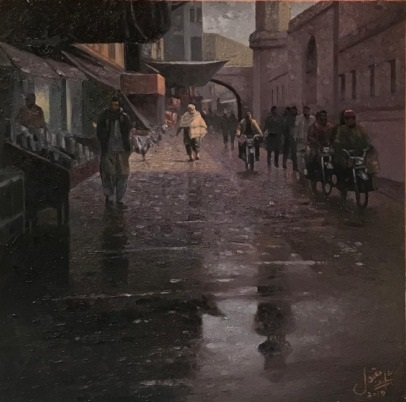
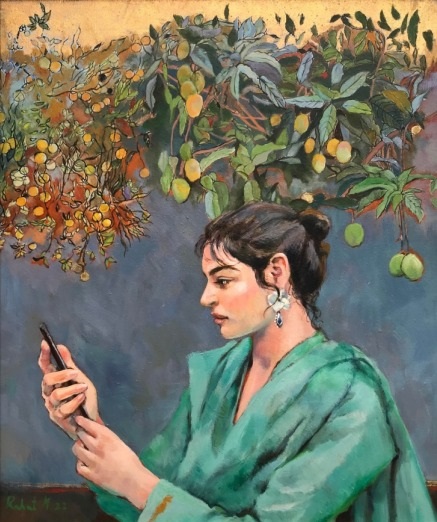
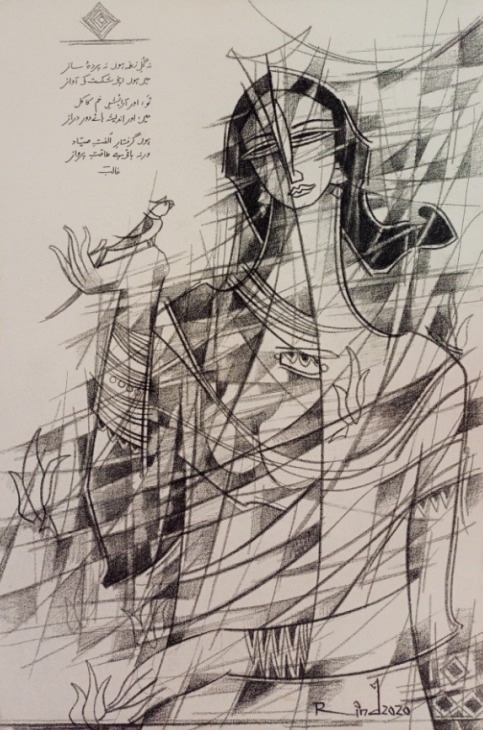
You may also like: